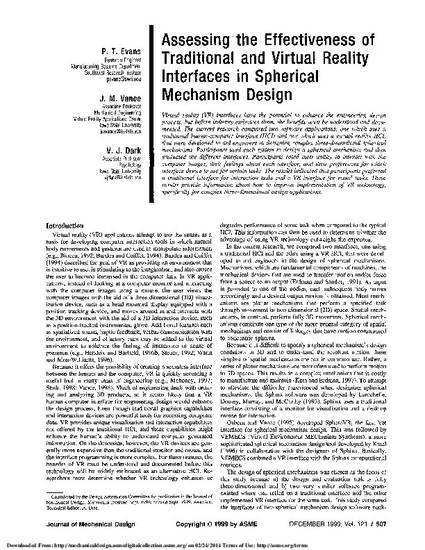
Virtual reality (VR) interfaces have the potential to enhance the engineering design process, but before industry embraces them, the benefits must be understood and documented. The current research compared two software applications, one which uses a traditional human-computer interface (HCI) and one which uses a virtual reality HCI, that were developed to aid engineers in designing complex three-dimensional spherical mechanisms. Participants used each system to design a spherical mechanism and then evaluated the different interfaces. Participants rated their ability to interact with the computer images, their feelings about each interface, and their preferences for which interface device to use for certain tasks. The results indicated that participants preferred a traditional interface for interaction tasks and a VR interface for visual tasks. These results provide information about how to improve implementation of VR technology, specifically for complex three-dimensional design applications.
Available at: http://works.bepress.com/judy_vance/29/

This article is from Journal of Mechanical Design 121 (1999): 507–514, doi:10.1115/1.2829490. Posted with permission.